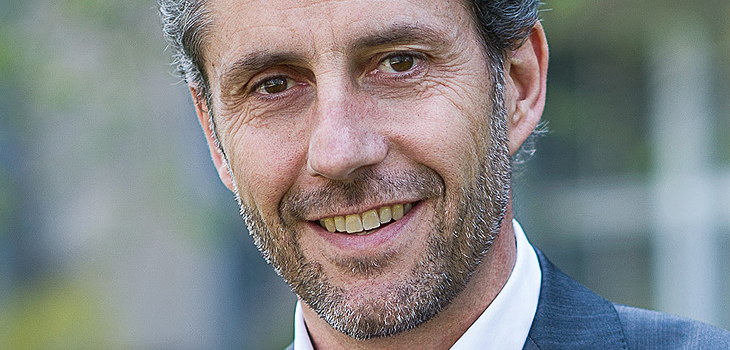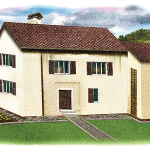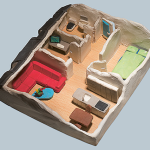A construction boom has been under way in Switzerland for some time now. But the quality of the buildings is much better than in the building boom of the 1980s – says someone who ought to know: Balz Halter, chairman of the Board of Directors of Halter AG, ETH engineer and lawyer.
Mr. Halter, will construction activity remain as intense as it has been?
I don’t think so in the medium term. In recent years, we’ve experienced incredible growth. Due to the exchange rate situation we can more likely expect a slowdown in the economy and thus construction activity.
Do you think it wise to invest in real estate in this environment?
Both private and institutional investors are finding it difficult these days to ferret out investments that have a potential to provide returns. Real estate – as opposed to many other types of investment – is a material asset. That is why it can generally be considered a stable investment, offering potential for appreciation over the long term.
So you assume owning an apartment still represents a sound investment…
Absolutely! Home ownership for the purpose of retirement will become even more important. Looking back, one might say in a few years that prices were high in 2015. Price fluctuations are possible. But I am absolutely convinced that an apartment is an excellent investment over a longer time horizon. Real estate is a finite commodity in Switzerland. People who don’t use their apartment themselves can usually achieve a satisfactory return on the rental market. If you take out a long-term mortgage today you will have a good equity yield rate, – which is even eligible for amortization.
How many homes does your company build each year?
Currently, something around 1,500 rental apartments and owner-occupied apartments.
Will you build less this year?
Yes, but not significantly less. In the high-price segment and in tourist regions it has certainly become more difficult. But there we have always been cautious. In major urban areas the demand for housing will remain strong.
How is marketing going?
We anticipate sustained demand due to the interest rates and the general environment. The margins will surely become narrower. Anyone offering apartments can no longer assume that the prices will increase steadily like in recent years. These days you have to carefully consider who you are directing the offer to and what the target group’s needs are.
What does a typical owner-occupied apartment buyer look like?
There is no longer such thing as a “typical“ buyer. Needs are very individual. As a developer of settlements we are therefore very careful to create a wide variety of apartments. This means a mix of smaller and larger units. Depending on the location there are apartments for the cost-conscious buyer.
The trend is moving towards building density. How well are large apartment complexes received in the market?
There is a certain target group that is looking specifically for this high-density form of housing, such as in an urban environment. It is important for buyers and tenants to have access to high-quality housing. For example, if there is no space for large front yards, public and semi-public spaces must be of high quality. In the meanwhile, there are plenty of examples of how this can be accomplished in practice.
Do spatial planning and building laws allow for the necessary leeway for high-density construction?
I have observed in many cities and towns that the overall conditions will not be able to keep up. In the past, compaction was possible, especially in the conversion of industrial areas to residential areas. But we are running out of spaces like that. That is why we also need to open up existing neighborhoods in cities and well-developed urban areas for a more dense kind of construction or for compaction.
How do apartments today differ from those of 30 years ago?
In the real estate boom of the 1980s almost everything that was built could be sold in no time. Today, you have to look much more closely at the “product” apartment and account for what needs an apartment has to meet. In addition, the materials and appliances are of a much higher quality. The Swiss population attaches great importance to high standards, even in rental housing.
You have established various companies in building technology. How is technology changing our homes?
Demographic developments, rapidly changing lifestyles and the ever wider use of technology in every life situation is changing the demands people place on their homes. It is no longer merely about having a roof over your head. People seek services that make life easier, safer and more enjoyable. We already use many services via smartphone. In the future, many virtual and especially physical services in our living environment will become available to assist us in every phase of life – as a single, as parents or as an elderly person. This can already be seen in upscale hotels or in advanced nursing facilities. Networking infrastructure and digital technology will make many things possible.
Will we be able to be more energy-efficient?
We are not exploiting the energy-saving options we already have by a long shot. Still way too much energy such as oil, gas or electricity is being wasted in our buildings. At the same time, we have access to enough energy right here at our latitude. We just have to “harvest” it, store it and use it when we need it. The concept is called Low-Ex or 2Sol. We have the technical capacity already. What we need are hybrid collectors that produce heat in addition to electricity. We store the heat in the ground with geothermal probes that are already in use today. Then the heat can be used via a thermal pump that is powered by self-generated electricity. I am convinced that concepts of this kind will make a relevant contribution to the current energy challenges – not least because they also have economic benefits.
For UBS site: http://www.ubs.com/ch/en/swissbank/private/ubs-magazine/home/your-home/home-ownership-is-suitable-for-retirement.html





